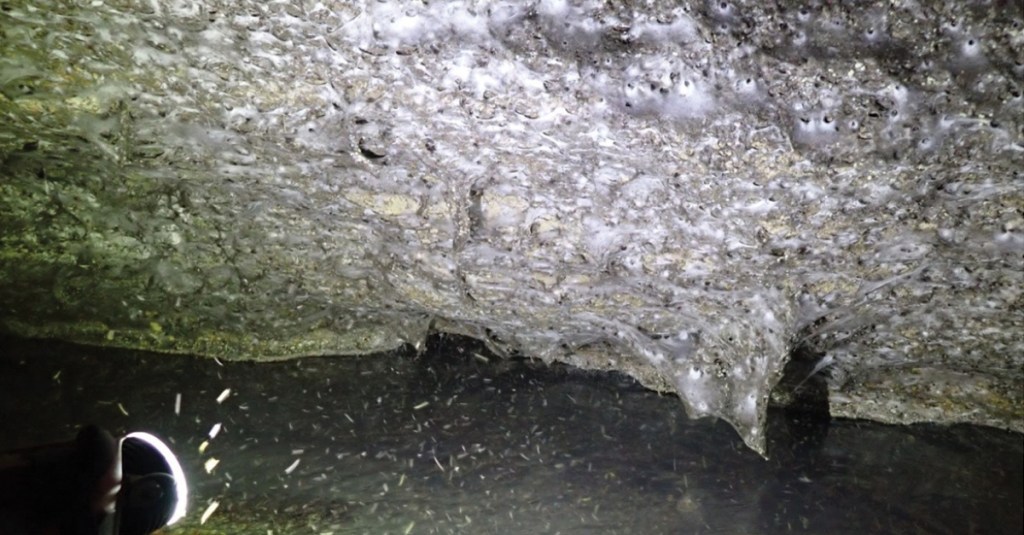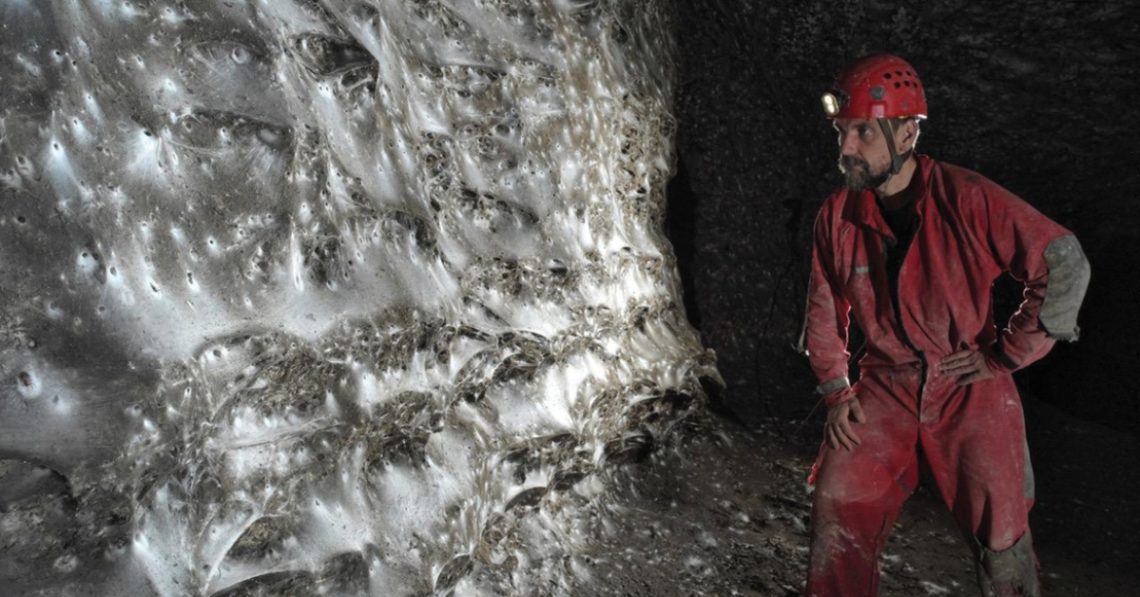Scientists have found what may be the largest spiderweb on Earth, and it’s holding more residents than most small towns. If spiders creep you out, this is not for you. Inside an underground chamber called Sulfur Cave, along the border of Albania and Greece, more than 111,000 spiders share a single interconnected web spanning about 1,140 square feet.
The discovery, published in Subterranean Biology, documents a massive colony living in total darkness, inside a cavern thick with hydrogen sulfide. The researchers counted roughly 69,000 Tegenaria domestica—the same house spiders that hang out in basements—and 42,000 Prinerigone vagans. Together, they’ve built a vast, living network of silk that binds the entire colony together.
“The natural world still holds countless surprises for us,” István Urák, a biologist at Sapientia Hungarian University of Transylvania, told Live Science. He described the first encounter with the web as a moment of “admiration, respect, and gratitude.”
The spiders built their colony in a chemical ecosystem that doesn’t depend on sunlight. A sulfur stream feeds bacteria that produce a white film on the cave walls. Non-biting midges eat the film, and the spiders eat the midges. Each level survives because of the one below it, a literal food chain of filth.

Scientists Discovered the World’s Biggest Spiderweb, and It’s Crawling With 111,000 Spiders
What makes this colony extraordinary isn’t only its size but its civility. These two species don’t normally coexist peacefully, but the researchers think the cave’s pitch-black conditions have changed their behavior. With sight and aggression dulled, cooperation has replaced competition.
DNA testing showed that the Sulfur Cave spiders have distinct microbiomes compared to their aboveground relatives, with fewer bacterial species in their guts. The adaptation suggests they’ve evolved to live off a sulfur-heavy diet that would probably kill anything else.
The team believes the colony deserves protection, although that could get complicated since the cave straddles two countries. “Unexpected discoveries can still occur,” Urák said. “Some species exhibit remarkable genetic plasticity under extreme conditions.”
A hundred thousand spiders sharing one roof might sound like the setup for a horror movie, but it’s really just communal living at its finest.
The post World’s Biggest Spiderweb Found in Horror Cave Crawling With 111,000 Spiders appeared first on VICE.




